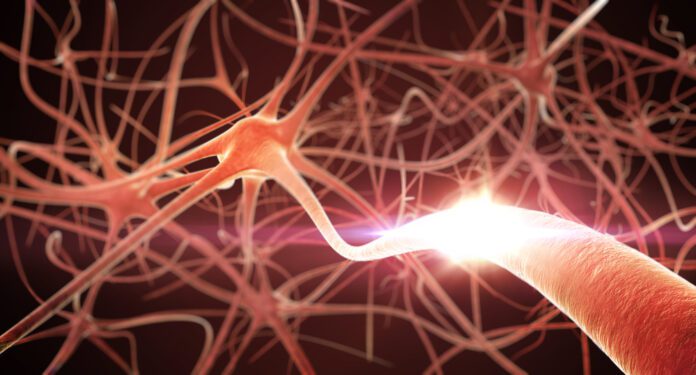Overview Of Multiple Mononeuropathy
Multiple Mononeuropathy is a nervous system disorder that involves damage to at least two separate nerve areas. Neuropathy means a disorder of the nerves.
Commonly Associated With
Mononeuritis multiplex; Mononeuropathy multiplex; Multifocal neuropathy; Peripheral neuropathy – mononeuritis multiplex
Causes Of Multiple Mononeuropathy
Multiple Mononeuropathy is a form of damage to one or more peripheral nerves. These are the nerves outside the brain and spinal cord. It is a group of symptoms (syndrome), not a disease.
However, certain diseases can cause injury or nerve damage that leads to the symptoms of multiple mononeuropathy.
Common conditions include:
- Blood vessel diseases such as polyarteritis nodosa
- Connective tissue diseases such as rheumatoid arthritis or systemic lupus erythematosus (the most common cause in children)
- Diabetes
Less common causes include:
- Amyloidosis, an abnormal buildup of proteins in tissues and organs
- Blood disorders (such as hypereosinophilia and cryoglobulinemia)
- Infections such as Lyme disease, HIV/AIDS, or hepatitis
- Leprosy
- Sarcoidosis, inflammation of the lymph nodes, lungs, liver, eyes, skin, or other tissues
- Sjögren syndrome, a disorder in which the glands that produce tears and saliva are destroyed
- Granulomatosis with polyangiitis, an inflammation of the blood vessel
Symptoms Of Multiple Mononeuropathy
Symptoms depend on the specific nerves involved, and may include:
- Loss of bladder or bowel control
- Loss of sensation in one or more areas of the body
- Paralysis in one or more areas of the body
- Tingling, burning, pain, or other abnormal sensations in one or more areas of the body
- Weakness in one or more areas of the body
Exams & Tests
The health care provider will perform a physical exam and ask about the symptoms, focusing on the nervous system.
To diagnose this syndrome, there usually needs to be problems with 2 or more unrelated nerve areas.
Common nerves affected are the:
- Axillary nerve in either arm and shoulder
- Common peroneal nerve in the lower leg
- Distal median nerve to the hand
- Femoral nerve in the thigh
- Radial nerve in the arm
- Sciatic nerve in the back of the leg
- Ulnar nerve in the arm
Tests may include:
- Electromyogram (EMG, a recording of electrical activity in the muscles)
- Nerve biopsy to examine a piece of the nerve under a microscope
- Nerve conduction tests to measure how fast nerve impulses move along the nerve
- Imaging tests, such as x-rays
Blood tests that may be done include:
- Antinuclear antibody panel (ANA)
- Blood chemistry tests
- C-reactive protein
- Imaging scans
- Pregnancy test
- Rheumatoid factor
- Sedimentation rate
- Thyroid tests
- X-rays
Treatment Of Multiple Mononeuropathy
The goals of treatment are to:
- Treat the illness that is causing the problem, if possible
- Provide supportive care to maintain independence
- Control symptoms
To improve independence, treatments may include:
- Occupational therapy
- Orthopedic help (for example, a wheelchair, braces, and splints)
- Physical therapy (for example, exercises and retraining to increase muscle strength)
- Vocational therapy
Safety is important for people with sensation or movement problems. Lack of muscle control and decreased sensation may increase the risk for falls or injuries.
Safety measures include:
- Having adequate lighting (such as leaving lights on at night)
- Installing railings
- Removing obstacles (such as loose rugs that may slip on the floor)
- Testing water temperature before bathing
- Wearing protective shoes (no open toes or high heels)
- Check shoes often for grit or rough spots that may injure the feet.
People with decreased sensation should check their feet (or other affected area) often for bruises, open skin areas, or other injuries that may go unnoticed. These injuries may become severely infected because the pain nerves of the area are not signaling the injury.
People with multiple mononeuropathy are prone to new nerve injuries at pressure points such as the knees and elbows. They should avoid putting pressure on these areas, for example, by not leaning on the elbows, crossing the knees, or holding similar positions for long periods.
Medicines that may help include:
- Over-the-counter or prescription pain drugs
- Antiseizure or antidepressant drugs to reduce stabbing pains



